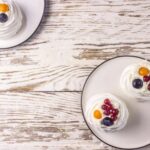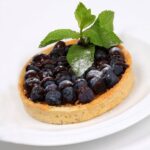Are you wondering what icing to use to decorate a cake? The choice of icing plays a crucial role in creating the perfect cake. The right icing not only enhances the overall appearance of the cake but also contributes significantly to its flavor. In this article, we will delve into the world of cake decoration and explore the different types of icing that can be used to create stunning designs and delicious flavor combinations.
When it comes to decorating a cake, selecting the right type of icing is essential. There are various options available, each with its unique characteristics and uses. From buttercream to royal icing, fondant, glaze, and cream cheese frosting, understanding the qualities and applications of these different types of icing is key to achieving your desired results.
In addition, we will discuss which type of icing works best for different cake designs and techniques such as piping, spreading, and creating intricate details. Whether you’re aiming for smooth and elegant lines or elaborate decorations, choosing the appropriate icing can make all the difference. With our insights and tips, you’ll be able to navigate through the world of cake decorating with confidence and creativity.
Types of Icing
When it comes to choosing the right icing for cake decoration, there are several options to consider. Each type of icing offers different textures, flavors, and application techniques, making it essential to understand the characteristics of each one. Here are some of the most popular types of icing used for decorating cakes:
Buttercream
Buttercream is a classic choice for cake decoration due to its creamy texture and versatility. It can be easily piped or spread onto cakes and is available in various flavors such as vanilla, chocolate, and fruit-infused. Buttercream is a great option for creating smooth finishes on cakes or for adding decorative borders and flowers.
Royal Icing
Royal icing is a mixture of confectioners’ sugar and egg white or meringue powder. It dries to a hard, smooth finish, making it ideal for intricate piping work and creating delicate designs such as lace or intricate details on wedding cakes. Royal icing can also be used to create intricate 3D decorations that hold their shape once set.
Fondant
Fondant is a pliable icing made from sugar, water, and gelatin. It can be rolled out into thin sheets and draped over cakes to create smooth, flawless finishes. Fondant is perfect for creating sculpted designs, covering multi-tiered cakes, and crafting detailed figurines or other edible decorations.
Glaze
Glaze icing is made by combining powdered sugar with liquid such as milk or fruit juice until it reaches a pourable consistency. It is often used to drizzle over bundt cakes or loaf cakes for a simple yet elegant finish. Glaze can also be colored and flavored in various ways to add visual appeal and complement the flavor of the cake.
Cream Cheese Frosting
Cream cheese frosting has a tangy flavor that pairs well with carrot cake or red velvet cake due to its creamy texture that spreads easily over cakes. This type of frosting is not only delicious but offers a beautiful off-white color that adds visual interest when decorating cakes.
Understanding the differences between these various types of icing will help you make an informed decision based on your specific cake decoration needs.
Best Icing for Different Designs
When it comes to cake decorating, choosing the right type of icing is crucial to achieving the desired look and achieving a delicious taste. Different cake designs and techniques require different types of icing to ensure the best results. Here are some insights into which type of icing works best for different cake designs and techniques such as piping, spreading, and creating intricate details.
1. Buttercream: Buttercream is a versatile icing that can be used for piping intricate designs as well as for spreading smoothly over a cake. It’s perfect for creating borders, flowers, and other detailed decorations due to its ability to hold its shape.
2. Royal icing: Royal icing is ideal for delicate designs such as lacework, filigree, and intricate patterns. It dries hard which makes it perfect for creating 3D decorations or building structures on cakes.
3. Fondant: Fondant is a popular choice for creating smooth finishes on cakes and allows for intricate details such as ruffles, bows, and sculpted figures. It’s also great for covering tiered cakes due to its ability to hold its shape.
4. Glaze: A glaze is perfect for creating simple yet elegant designs on cakes. It can be poured over the cake to create a smooth finish or drizzled over baked goods for a decorative touch.
5. Cream cheese frosting: This type of frosting is ideal for spreading over cakes with textured surfaces such as carrot cake or red velvet cake. It adds a rich flavor and creamy texture while being easy to work with when creating rustic or semi-naked cake designs.
Choosing the right type of icing based on the specific design and technique used will ensure that your cake turns out just the way you envisioned it. Experimenting with different types of icings will allow you to discover which one works best depending on your preferences and the specific requirements of your cake design.
Tips for Choosing the Right Icing
When it comes to choosing the right icing for cake decoration, there are a few factors to consider to ensure that the end result is not only visually appealing but also delicious. Here are some tips to help you select the appropriate icing based on the flavor of the cake, the climate, and the desired aesthetic.
Consider the Flavor of the Cake
The first thing to consider when choosing icing for cake decoration is the flavor of the cake itself. For example, if you are working with a rich chocolate cake, you may want to opt for a lighter and smoother icing such as Swiss meringue buttercream to balance out the flavors.
On the other hand, a dense and tangy lemon cake pairs perfectly with a cream cheese frosting. It’s important to choose an icing that complements the taste of the cake to create a harmonious overall flavor.
Take Climate Into Account
Another important consideration when selecting icing for cake decoration is the climate in which the cake will be served. In warmer or more humid climates, butter-based icings like American buttercream can melt or become overly soft, leading to a messy presentation. In these instances, it’s better to opt for stable frostings like fondant or ganache that hold up well in various temperatures.
Desired Aesthetic
Ultimately, your choice of icing should also be based on the aesthetic you want to achieve with your cake design. If you’re looking for a smooth and sleek finish, fondant may be your best option. For intricate details and piping work, royal icing provides more precision and hold than other types of icing. Consider what type of look you want for your cake and choose your icing accordingly.
By considering these tips when choosing icing for cake decoration, you can ensure that your final creation not only looks beautiful but also tastes amazing. Don’t be afraid to experiment with different flavors and techniques to find what works best for your specific needs and preferences.
Flavor Combinations
When it comes to decorating a cake, the flavor combination of the cake and icing is just as important as the design itself. The right pairing can elevate the overall taste experience, making it a delightful treat for any occasion. Here are some flavor combinations to consider when choosing the icing for your cake:
- Vanilla cake with chocolate buttercream: The classic combination of vanilla and chocolate never fails to please. The light and sweet vanilla cake perfectly complements the rich and decadent chocolate buttercream.
- Lemon cake with raspberry glaze: For a refreshing and tangy flavor profile, consider pairing a zesty lemon cake with a sweet and slightly tart raspberry glaze. This combination is perfect for spring or summer celebrations.
- Red velvet cake with cream cheese frosting: The rich cocoa flavor of red velvet cake pairs beautifully with the creamy tanginess of cream cheese frosting. This iconic duo is a crowd favorite for good reason.
When deciding on a flavor combination, it’s important to consider the overall theme of the event or celebration. For example, if you’re hosting a tropical-themed party, a coconut cake with pineapple buttercream could be a winning choice. If you’re creating a dessert for a holiday gathering, such as Christmas or Thanksgiving, seasonal flavors like pumpkin spice cake with maple frosting could be fitting options.
Remember that experimenting with different flavor combinations can be both fun and delicious. Don’t be afraid to get creative and think outside the box when it comes to pairing cake and icing flavors.
Vegan and Allergen-Friendly Options
When it comes to cake decoration, it’s essential to consider the dietary restrictions of those who will be enjoying the sweet treat. For individuals with dietary restrictions such as being vegan, gluten-free, or having nut allergies, there are various icing options available to accommodate their needs.
For vegans, traditional buttercream and cream cheese frosting are off the table due to their dairy content. However, there are plenty of delicious and creamy alternatives to choose from. Many bakeries and specialty food stores now offer vegan-friendly buttercream made with plant-based margarine or shortening and non-dairy milk. Additionally, coconut whipped cream is a popular choice for a lighter, tropical flavor that complements fruity cake fillings.
Individuals with gluten allergies can opt for icings that do not contain any gluten-containing ingredients. This often means avoiding pre-made store-bought frostings, as they may include thickeners or stabilizers derived from wheat. Instead, homemade buttercream using gluten-free powdered sugar and pure extracts is a safe bet. Royal icing is another great option for creating intricate designs without the worry of gluten cross-contamination.
In the case of nut allergies, it’s essential to ensure that the chosen icing does not contain any traces of nuts or was produced in facilities exposed to nuts. Many commercial fondant brands can potentially come into contact with nuts during production processes; therefore, it’s crucial to read labels carefully before purchasing.
Opting for homemade icings using nut-free ingredients provides peace of mind and allows individuals with nut allergies to confidently enjoy beautifully decorated cakes without compromising their health.
Professional Decorating Techniques
When it comes to creating professional-looking cake designs, the right icing and the proper tools can make all the difference. One of the essential techniques for using icing to decorate a cake is using a frosting comb.
This tool allows you to create textured or patterned finishes on the sides of your cake, giving it a polished and professional appearance. By simply running the comb along the frosted surface of the cake, you can achieve a variety of decorative effects, such as stripes, waves, or ridges.
Another indispensable tool for achieving smooth and flawless icing on a cake is an icing smoother. This simple yet effective tool helps to create perfectly even surfaces on both round and square cakes. By gently pressing the smoother against the frosted surface while rotating the cake, you can eliminate any imperfections and achieve a seamless look.
In addition to these tools, using piping bags is essential for creating intricate details and designs with icing. Piping bags allow for greater precision when adding decorative elements such as borders, flowers, lettering, or other elaborate embellishments. With different piping tips and techniques, you can unleash your creativity and bring your cake designs to life in stunning detail.
By mastering these professional decorating techniques and using the right tools, you can elevate your cake decorating skills and achieve impressive results that rival those of professional bakers. Whether you are creating a simple but elegant design or a more complex masterpiece, practicing these techniques will help you enhance the overall appearance of your cakes and impress anyone who takes a bite.
Remember that choosing the right icing for your design is just as important as mastering these techniques – from buttercream for vibrant colors to fondant for sculpted details – it’s all about finding what works best for your creative vision.
Troubleshooting Common Icing Issues
When decorating a cake with icing, it’s common to encounter certain issues that can affect the overall look and quality of your creation. From air bubbles and drooping to color bleeding, there are several common problems that can arise when working with icing. Fortunately, there are solutions to fix these issues and achieve the perfect cake decoration.
Air bubbles in icing can be a frustrating problem, but they can be easily prevented and fixed. To avoid air bubbles, it’s essential to properly mix the icing and eliminate any excess air during the mixing process. If air bubbles do appear on your cake, gently tap the surface with a small spatula or use a toothpick to carefully release them.
Another common issue when working with icing is drooping or sagging. This often occurs when the icing is too thin or if the temperature is too warm. To prevent drooping, make sure your icing has the right consistency by adjusting the amount of liquid used and keep your cake in a cool environment. If drooping does occur, carefully scrape off the affected areas and allow the cake to cool before reapplying fresh icing.
Color bleeding can also be a problem, especially when using vibrant or dark-colored icings. To prevent color bleeding, allow each layer of icing to completely dry before adding another color on top. Additionally, using gel food coloring instead of liquid food coloring can help minimize color bleeding.
In summary, troubleshooting common icing issues is an important part of mastering cake decoration. By being aware of these potential problems and knowing how to address them, you’ll be better equipped to create beautifully decorated cakes without the frustration of dealing with unexpected issues.
| Common Icing Issue | Solution |
|---|---|
| Air Bubbles | Properly mix the icing and release air bubbles by tapping or using a toothpick |
| Drooping/Sagging | Adjust icing consistency and keep cake in a cool environment; scrape off affected areas if needed |
| Color Bleeding | Allow layers of icing to dry completely before adding another color; use gel food coloring instead of liquid coloring |
Conclusion
In conclusion, choosing the right icing for cake decoration is essential to achieving both a visually appealing and delicious end result. The type of icing used can greatly impact the overall look and taste of the cake, so it’s important to consider factors such as the desired design, flavor pairing, and any dietary restrictions. From buttercream to royal icing, fondant to glaze, there are a variety of options to explore when it comes to decorating a cake.
When selecting the appropriate icing, it’s crucial to consider the specific design and technique being employed. For intricate details and piping work, a firmer icing like royal icing or fondant may be more suitable. On the other hand, for a smoother finish and easy spreading, buttercream or cream cheese frosting could be the better choice. It’s important for bakers and decorators to experiment with different types of icing to find what works best for their specific needs.
Ultimately, the process of selecting an icing for cake decoration should not only be practical but also enjoyable. Experimenting with different flavor combinations, trying out new decorating techniques, and embracing creative freedom are all part of the fun in cake decorating. Whether baking for personal enjoyment or as a professional endeavor, choosing the right icing is just another exciting aspect of bringing beautiful and delectable cakes to life.
Frequently Asked Questions
What Is the Best Thing to Use to Decorate a Cake?
The best thing to use to decorate a cake is usually a combination of frosting, icing, fondant, and edible decorations like fresh fruit, chocolate shavings, or flowers. These elements can add both visual appeal and flavor to the cake.
What Do Bakers Use to Decorate Cakes?
Bakers use a variety of tools and techniques to decorate cakes, including piping bags and tips for applying frosting or icing in intricate designs, as well as fondant molds and sculpting tools for creating three-dimensional decorations. Edible ink printers are also becoming more popular for adding detailed images to cakes.
What Is Used to Put Icing on Cake?
Icing on a cake is typically applied using a piping bag with a specific tip that allows for precise control over the flow of the icing. Some bakers may also use offset spatulas or bench scrapers to smooth out the icing and create clean lines on the cake’s surface.
Overall, precision and creativity are key when putting icing on a cake.

Welcome to my blog about home and family. This blog is a place where I will share my thoughts, ideas, and experiences related to these important topics. I am a stay-at-home mom with two young children. I hope you enjoy reading it! and may find some helpful tips and ideas that will make your home and family life even better!





